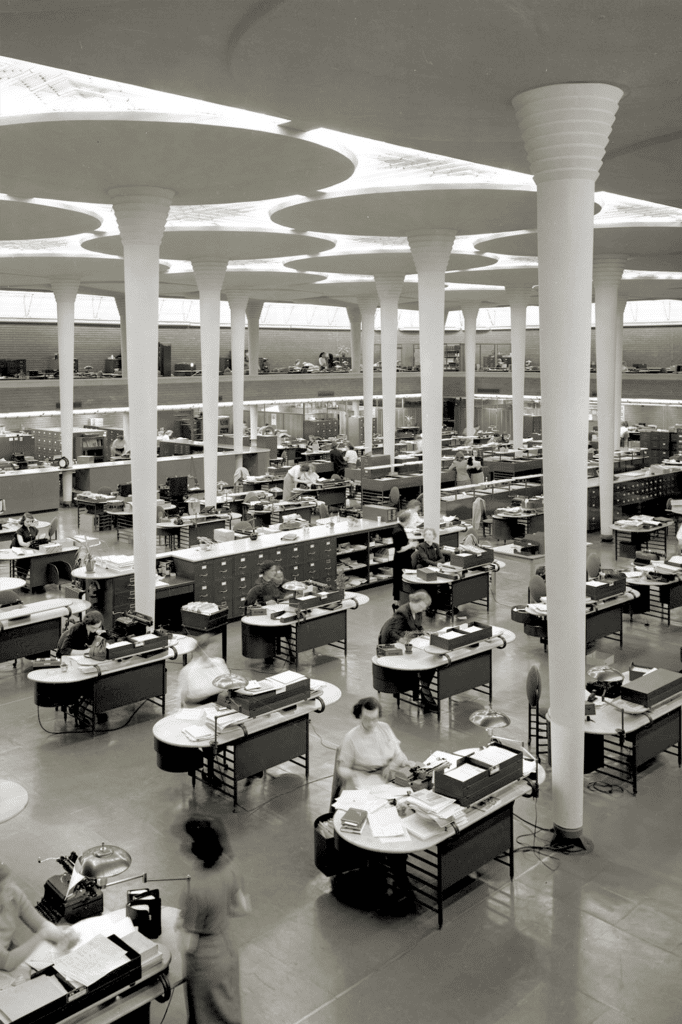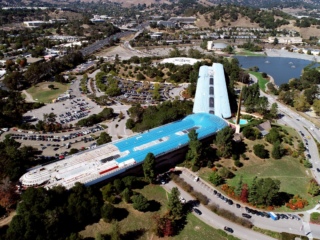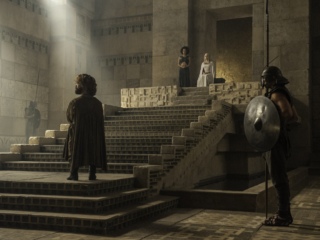
Imagining the Future Through Frank Lloyd Wright’s Work
Tierney Hamilton, Marin Cultural Association | Jul 19, 2019
Frank Lloyd Wright’s ideas were often ahead of their time and in turn served as inspiration for many creators of futuristic, science-fiction films. This influence that Wright had, which can be seen in popular films including Gattaca, Star Wars, and more, is a testament to the visionary he was.
Knowing the full extent of Frank Lloyd Wright’s influence on American culture is seemingly impossible. Late in his life, the architect even dabbled in science fiction. An uncanny prescience has always been a feature of his work. Aesthetically, he was far ahead of his time. Today, we take for granted how forward-looking even his earliest designs were. UFOs might not be the first thing that comes to mind when considering Wright, but the architect’s style can be seen in everything from bleak dystopian futures to space operas.
By the early 1950s, Wright was a design superstar. Among the most iconic examples of his work in science fiction is the flying saucer from the 1951 film “The Day the Earth Stood Still.” Referencing his own work on Johnson’s Wax Headquarters in Racine, WI, Wright collaborated with set designers Thomas Little and Claude Carpenter on the spacecraft. As the saucer’s dome opens and closes seamlessly, it gives the appearance of a solid surface without doorways or windows. Discussing the exterior of the saucer, Wright stated that he tried “… to imitate an experimental substance that …acts like living tissue.” Adding, “if cut, the rift would appear to heal like a wound, leaving a continuous surface with no scar.”
Not even a subpar script could distract from the stunning architecture of the planet Naboo in George Lucas’ 1999 film “Star Wars Episode I: The Phantom Menace.” Interiors evoke Northern Italian High Renaissance architecture, while the exteriors of Naboo’s palaces bear striking resemblances to the Annunciation Greek Orthodox Cathedral in Wauwatosa, Wisconsin and likewise the Marin County Civic Center. Knowing Lucas’ affection for the Civic Center, it’s no surprise it also appeared in his earliest film, “THX-1138.” The buildings of the planet Naboo feature blue roofs atop small arches and oculi on circular, cream-colored towers. Other sci-fi films, including 1997’s “Gattaca,” also used the Marin County Civic Center for location and inspiration.

The Great Workroom, SC Johnson Wax Headquarters.
The 50th anniversary of the moon landing reminds us to look toward the future and whatever fantastic worlds await us. But we must also look to the visionaries, like Wright, who imagined those futures long before we did.
This article originally appeared in Marin Center Magazine.
SUBSCRIBE TO THE QUARTERLY
Frank Lloyd Wright Foundation members, at Subscription level and above, receive the Frank Lloyd Wright Quarterly magazine as part of their membership benefits. The spring 2019 Quarterly, “Timeless: Frank Lloyd Wright + Contemporary Pop Culture” will give readers a deeper look into Wright’s staying influence in modern-day pop culture in everything from movies, television, art, and more.




